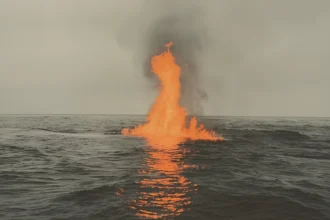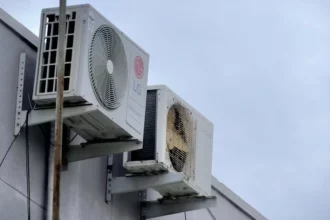What happens when your city becomes twice as hot and faces dramatically stronger rainfall in just six years? According to a major new climate study from HindustanTimes, this is exactly what millions of Indians should prepare for by 2030.
Researchers from IPE Global and Esri India have created a comprehensive climate forecast that paints a concerning picture for India’s immediate future. Lead study author Abinash Mohanty explains that cities across India will experience double the number of heatwave days compared to what people faced in 1980.
Breaking Down the Numbers: What These Projections Really Mean
When scientists say “two-fold increase in heatwave days,” they mean that if your city had 10 extremely hot days in 1980, it will have 20 such days by 2030. This dramatic change affects major metropolitan areas including Delhi, Mumbai, Chennai, Surat, Thane, Hyderabad, Patna, and Bhubaneswar.
The 43% rise in extreme rainfall intensity is equally significant. Think of it this way: if your area received 100 millimeters of rain during a heavy downpour in the past, the same type of storm will now dump 143 millimeters in the same timeframe.
Perhaps most striking is the historical trend the study reveals. India has already witnessed a 15-fold increase in extreme heat wave days over the last three decades during March through September. This means areas that experienced one extreme heat day per season in the 1990s now face fifteen such days.
Geographic Impact: Which Areas Face the Greatest Risk
| High-Risk States | Impact Level | What This Means |
| Gujarat, Rajasthan, Tamil Nadu | Over 75% of districts affected | Three out of four districts will face severe heat stress and extreme rainfall |
| Odisha, Uttarakhand, Himachal Pradesh | Over 75% of districts affected | Mountain and coastal regions will experience unprecedented weather patterns |
| Maharashtra, Uttar Pradesh | Over 75% of districts affected | India’s most populous states face widespread climate challenges |
| Coastal Districts Nationally | 69% in 2030, 79% by 2040 | Rising heat stress will affect four out of five coastal areas within two decades |
The Science Behind These Predictions
The study uses advanced computer modeling techniques that work like super-sophisticated weather forecasting. According to EPA sources, this “dynamical downscaling” method uses physics-based calculations to predict local weather patterns with high accuracy.
Think of it as taking global weather patterns and using mathematical formulas based on thermodynamics and fluid mechanics to predict what will happen in specific Indian districts. NOAA’s Geophysical Fluid Dynamics Laboratory confirms these physical laws remain consistent even as climate changes, making the predictions reliable.
The researchers analyzed historical data from 1993 to 2024 and used ensemble modeling – essentially running multiple computer simulations to ensure accuracy in their 2030 and 2040 projections.
Preparing for What’s Coming: Practical Steps
- Hydration becomes critical: Times of India recommends drinking water frequently throughout the day and consuming water-rich foods like watermelon and cucumber to maintain body temperature
- Emergency preparedness: UNICEF advises keeping an emergency kit containing ORS packets, extra water supplies, and cooling cloths readily available
- Timing outdoor activities: Staying indoors during peak heat hours (typically 10 AM to 4 PM) becomes essential for safety
- Community planning: Understanding that 72% of tier-I and tier-II cities will face increased extreme weather helps local governments prepare infrastructure
Looking Ahead: Solutions and Implications
Mohanty recommends “hyper-granular risk assessments” – essentially detailed neighborhood-level climate planning rather than broad regional approaches. He also suggests establishing climate-risk observatories that continuously monitor local conditions.
The study’s call for risk financing instruments means developing insurance and emergency funding systems specifically designed for extreme weather events. With over 100 deaths from last summer’s heat waves and flooding, such preparation isn’t just helpful – it’s becoming essential for survival.










